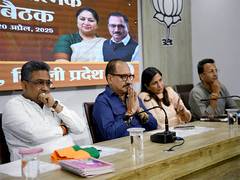Remains of 13th century temple found near Chandikhole in Odisha
Bhubaneswar, Mar 13 (PTI) The base and other archeological remains of a 13th century temple have been unearthed in a village in Odisha’s Jajpur district, about 70 km from here, INTACH said here on Monday.
The ruins of the temple were located scattered over four acres at the base of a small hillock at Purushottampur Sasana village in Badachana block of the district, a little away from the railway siding of Dhanamandal station, it said. Considering its iconography, the temple is likely to have been constructed around the 13th/14th century C.E, the period when the Eastern Ganga Dynasty held sway over the region, said Deepak Kumar Nayak, a member of the INTACH team that explored the spot.
It was first located by a local heritage enthusiast Nrupati Nihar Siala.
“The ruins are suggestive of a large temple complex that had crumbled. However, its base is still clearly visible. A large number of huge stone blocks, intricately carved stone panels and a few religious sculptures are found scattered all around the site,” Nayak said.
While dense undergrowth have overrun the site, the temple base till the pista level, which is two feet underground, is practically intact. A kalasa’ (top of a temple shaped like a pot) was found at the dug-up site of the railway property, the team members said.
There are nearly a thousand odd pieces of artifacts scattered at the site, while most of the square blocks have been removed by villagers for construction purposes, they said.
The most notable stone panels found in the area are depictions of war processions, musical bands, royal processions, palanquins and elephants.
A three-member team of the Indian National Trust For Art & Cultural Heritage (INTACH) comprising Anil Dhir, Biswajit Mohanty and Nayak had explored the spot.
The Jajpur region was known as Guheswarapataka’ in ancient times. The region was ruled by the Bhaumakaras, Somavamsis, Gangas and Suryavamsis dynasties at different times. Art and architecture touched the pinnacle during their rule and many beautiful temples were built.
Many of them came under the attacks of iconoclastic marauders which included Firoz Shah Tughlaq, Kalapahada who was a military general of the Sultanate of Bengal under the Karrani dynasty and credited for conquering Orissa, and Aurangzeb, said Mohanty.
“The Jajpur region witnessed cultural genocide as many temples and mutts were destroyed. The Purushottampur temple too must have been destroyed during one such attack,” he said.
Dhir, who is the INTACH Odisha unit project co-ordinator, said the presence of many small forts in the vicinity is indicative of a large habitation in the early days. Many archaeological remains from Eastern Ganga’s era have been discovered in the nearby forts of Amaravati, Teligada and Darpanagada.
The nearby villages of Teligada and Dharmasala had earlier yielded the Rathayatra stone panel and a magnificent Krishna-Vishnu image.These are now kept at the Odisha State Museum. The archaeological remains and antiquities noticed at this spot are very similar in nature, he said.
Dhir stressed on proper archaeological excavation of the site by experts of the State Archaeology Department or ASI and the few embellished stone blocks and sculpted pieces of the temple that remain should be removed and kept at the State Museum, he said.
INTACH will prepare a preliminary report and submit it to the authorities with a request to conduct a proper survey of the site and the nearby areas, he added.






